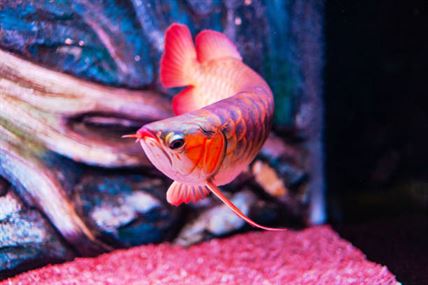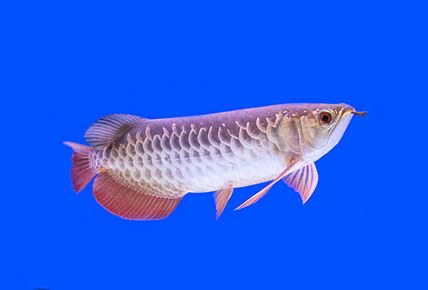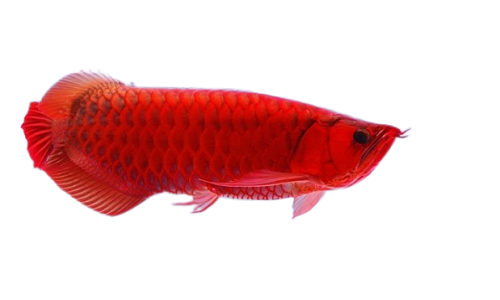Why Are Arowana Fish So Expensive?
Ever wonder why people pay thousands for a single fish? You’re not alone. The arowana is one of the most coveted aquarium fish in the world, with price tags to match. But what makes this freshwater fish so special?
The Unique Appearance and Rarity of Arowana Fish
With their ancient lineage and prehistoric appearance, arowana fish captivate hobbyists. Their metallic scales shine in vibrant colors like red, gold, and silver. Their elongated, toothless jaws and large pectoral fins give them a dragon-like quality.
These characteristics, coupled with their scarcity, drive their high price tag. Arowana fish inhabit the freshwater rivers and wetlands of Southeast Asia, Australia, and South America. Destruction of their native habitats has made some species endangered in the wild. Commercial breeding has helped populations rebound, but arowana remain uncommon in the exotic pet trade.
High-quality specimens with desirable color mutations and finnage can sell for tens of thousands of dollars. The most prized varieties, like the red and gold arowana, feature mutations that intensify their coloration. These vivid fish are seen as prestige symbols in some cultures and are thought to bring good luck. For collectors around the world, the arowana’s beauty, history, and rarity create allure that’s hard to resist.

The Intensive Care and Maintenance Arowanas Require
To keep an arowana thriving, you’ll need to commit to providing round-the-clock care. These fish require pristine, specialized habitats and diets.
Habitat
Arowanas need massive aquariums, we’re talking 180 liters at a minimum. You’ll also want powerful filtration and lighting systems, along with regular water testing and changes. The water conditions must be just right, soft and slightly acidic, with minimal chlorine. Decorations should be sparse, as arowanas can injure themselves on sharp objects.
Diet
In the wild, arowanas eat a diet of insects, fish, and crustaceans. You’ll need to feed your pet arowana a high-protein diet 2-3 times a day. Live or frozen foods like feeder fish, shrimp, and crickets should make up a large portion of their diet. Pellet food can supplement, but live and frozen foods provide essential nutrients.
Attention
Lastly, arowanas are intelligent and social fish that bond closely with their owners. You’ll need to spend time each day interacting with and observing your fish. Their shimmering scales and graceful movements can be mesmerizing. While the care is intensive, the rewards of keeping such a magnificent creature are well worth the effort.

Why Arowanas Are Seen as Symbols of Wealth and Status
Arowanas have become a symbol of wealth and status for good reason. These fish don’t come cheap! Their scarcity and high demand have made them a prized commodity for collectors and aquarium enthusiasts around the globe.
Some species of arowana, like the Asian arowana, are listed as endangered, making them rare in the wild and tightly regulated in the pet trade. This scarcity significantly drives up market prices, with some rare color variants selling for tens of thousands of dollars at auction.
Prestige Pets
Owning an arowana, especially a rare specimen, signifies wealth and status. They’ve become a prestige pet and collector’s item, much like rare art or vintage cars. Displaying an arowana in a lavish aquarium is a visible symbol of one’s affluence and refined tastes.
Arowanas are also believed to bring good luck and prosperity according to Feng Shui practices. Their metallic scales and resemblance to dragons have given them an auspicious reputation in Chinese culture as a symbol of fortune and success. Placing an arowana in a strategic location in one’s home or office is thought to positively influence wealth and career.
So between their scarcity, popularity as a prestige pet, and symbolic association with prosperity, it’s easy to see why arowanas command such a high price and are coveted as a status symbol of wealth. The alluring mystique of the “dragon fish” combined with its extravagant cost has cemented the arowana as an elite luxury in the exotic pet trade.
The High Global Demand and Lucrative Market for Arowanas
The allure of arowanas is truly global. These mysterious dragon fish have captivated aquarists and collectors around the world, fueling an extremely lucrative trade and high demand.
Scarcity and Exclusivity
Arowanas are scarce in the wild, limited to specific regions of Southeast Asia, South America, and Africa. Their restricted availability and exotic nature have made them highly prized. Owning an arowana signifies wealth and status, as they can command very high prices. Some rare specimens have sold for over $400,000 at auction.
Feng Shui Symbolism
In many Asian cultures, arowanas are revered as a symbol of good luck, prosperity, and abundance. According to Feng Shui practices, the Arowana’s metallic scales and flowing fins represent an influx of money and resources. Displaying an arowana in your home or office is thought to positively influence wealth and success. This cultural symbolism and mysticism fuel demand, especially in China and other Asian countries.
The Lucrative Arowana Trade
The high demand and scarcity of arowanas have created a lucrative global trade. Arowana breeders, farmers, and traders can charge premium prices, especially for prized specimens like the Malaysian Golden. The exotic pet industry has capitalized on the popularity of arowanas, marketing them as an elite and prestigious pet for dedicated aquarists and collectors around the world. For those able to afford them, arowanas remain an enduring status symbol and captivating creature.
The Challenges of Selective Breeding and Aquaculture for Arowanas
Breeding arowanas is no easy feat. To produce the most prized specimens, breeders carefully select parent fish with desirable traits like vibrant colors, striking finnage, and a proportional body shape. ### Crossing two high-quality fish, however, does not guarantee an exceptional offspring. Breeders have to hatch thousands of eggs to get a few fry with champion potential.
Raising arowana fry also requires expertise. The tiny fish need live feed like brine shrimp for their first months. As they grow, their diet shifts to feeder fish, but these must be properly gut-loaded and quarantined to avoid disease. The water conditions must be pristine too, with optimal temperature, pH, and filtration.
Some breeders now use aquaculture techniques to boost production, but this too has challenges. Crowding fish together risks stress and disease, and some believe tank-raised fish lack the character of wild-caught ones. However, aquaculture has enabled some rare varieties to propagate, and when done responsibly it eases pressure on wild populations.
Whether wild or farmed, quality arowanas remain scarce and costly. But for breeders and hobbyists committed to these magnificent fish, the challenges of cultivating them are part of the allure. With care and patience, the rewards of breeding arowanas—seeing a new generation flourish and finding an exceptional specimen—make all the effort worthwhile.

How Much Does Silver Arowana Cost?
As one of the most sought-after arowana species, silver arowanas command a high price tag. These fish are not cheap, my friend. A young silver arowana, around 8 to 12 inches in length, will typically cost between $800 to $2,000. The price only goes up from there for larger, older fish.
Why so pricey? A few reasons:
Scarcity
Silver arowanas are native to South America, and populations in the wild have declined due to habitat loss and overfishing. They are now considered endangered, so the arowanas available in the pet trade are bred in captivity on specialized fish farms. The limited supply and high demand keep prices high.
Appearance
With its metallic silver scales, red eyes, and whisker-like barbels, the silver arowana is a stunning fish. Its beauty and unique appearance are appealing to collectors and aquarium hobbyists willing to pay top dollar.
Symbolism
In Asian cultures, especially in areas like China and Southeast Asia, arowanas are revered as a symbol of prosperity, luck, and longevity. Keeping an arowana, particularly a coveted silver one, is a sign of wealth and status. This cultural significance also contributes to the high costs.
So if owning one of these magnificent “dragon fish” is your dream, be prepared to shell out some serious cash. But for the privilege of keeping such a storied and captivating creature, many hobbyists say the investment is well worth it. A silver arowana can live up to 30-50 years, so it may even become a cherished lifelong companion!
What is the Most Expensive Arowana
The most prized—and pricey—arowana are the Asian arowana, especially varieties with rare and vibrant coloration. ### The Asian Arowana. These “dragon fish” are native to Southeast Asia and come in metallic shades of red, gold, and green. The red and gold varieties, in particular, are considered auspicious in Chinese culture and are highly sought after.
Prices for top-quality Asian arowanas can be staggering. At a recent auction in Singapore, a “Super Red” arowana sold for over $400,000, setting a new world record. Private sales of champion bloodline arowanas bred for their radiant color and perfect form can fetch $50,000 or more.
Selective Breeding. The high prices commanded by prize arowanas are a result of intensive breeding programs that have produced fish with increasingly vibrant and uniform coloration as well as a distinctive bulbous head and protruding jaws. Each new generation of fish is carefully selected to breed the next, most exceptional generation.
Arowana breeding is a booming—and lucrative—industry, especially in Malaysia, Singapore, Taiwan, and Indonesia. As wild arowana populations have declined due to habitat loss and overfishing, cultivated varieties have become the main source for the exotic pet trade and arowana collectors. For those seeking the rarest and most perfect specimens, the sky seems to be the limit when it comes to price. The allure of the arowana shows no sign of fading anytime soon.
Why are Arowana Fish Lucky?
In Asia, the Arowana is considered an auspicious fish that brings good luck and prosperity. Their metallic scales and barbels whiskers are thought to resemble dragons, symbols of power and good fortune.
Keeping an Arowana in your home or business is believed to enhance the flow of positive energy and attract wealth. Some even place their aquariums in spots designed to improve the feng shui. The vibrant red and golden varieties, in particular, are highly coveted for their symbolic power.
For many collectors, the Arowana is a status symbol. Their high price tags and scarcity make them a prestigious catch, demonstrating the owner’s discernment and affluence. Displaying a prized Arowana shows you have the means and dedication to properly care for such a valuable creature.
In Chinese culture especially, the Arowana is revered for its longevity and strength. They are seen as bringing longevity, perseverance, and determination. Their perseverance in challenging conditions is admired and associated with overcoming life’s difficulties.
With such potent symbolism and an aura of wealth surrounding them, it’s no wonder the Arowana has become the world’s most expensive aquarium fish. For those who believe in its magical properties, no price is too high for such a treasured good luck charm.
The Cost of Feeding and Housing an Arowana
As a premium exotic fish, arowana require specialized care that doesn’t come cheap. Their specific habitat and diet needs are major contributors to their hefty price tag.
To house an arowana properly, you’ll need an aquarium of at least 180 gallons with powerful filtration and lighting systems. These monster tanks and equipment don’t come cheap. You’ll also need to invest in high-quality decor like driftwood, plants, and substrate that won’t harm your arowana.
In terms of diet, arowana are carnivores and require a protein-rich menu of feeder fish like guppies or shrimp. As your arowana grows, it may eat $20-$50 of feeder fish each week. You’ll also need to supplement their diet with pelleted food, insects, and the occasional treat of meat like beef heart.
Maintaining the correct water conditions is also expensive and time-consuming. Arowana need soft, acidic water with a pH of 6-7. You’ll need to test the water regularly and perform frequent partial water changes of about 25% of the tank volume every week or two. Best powerful tips about Arowana Fish that you need to Know
All told, you can expect to pay $200-$500 per month to properly care for an arowana. The initial setup costs for a tank and equipment can easily exceed $1000. Is the regal beauty and symbolic prestige of an arowana worth the investment? For dedicated aquarists and collectors, the answer is a resounding yes. But for the average hobbyist, the cost of these “dragon fish” may simply be too great.



